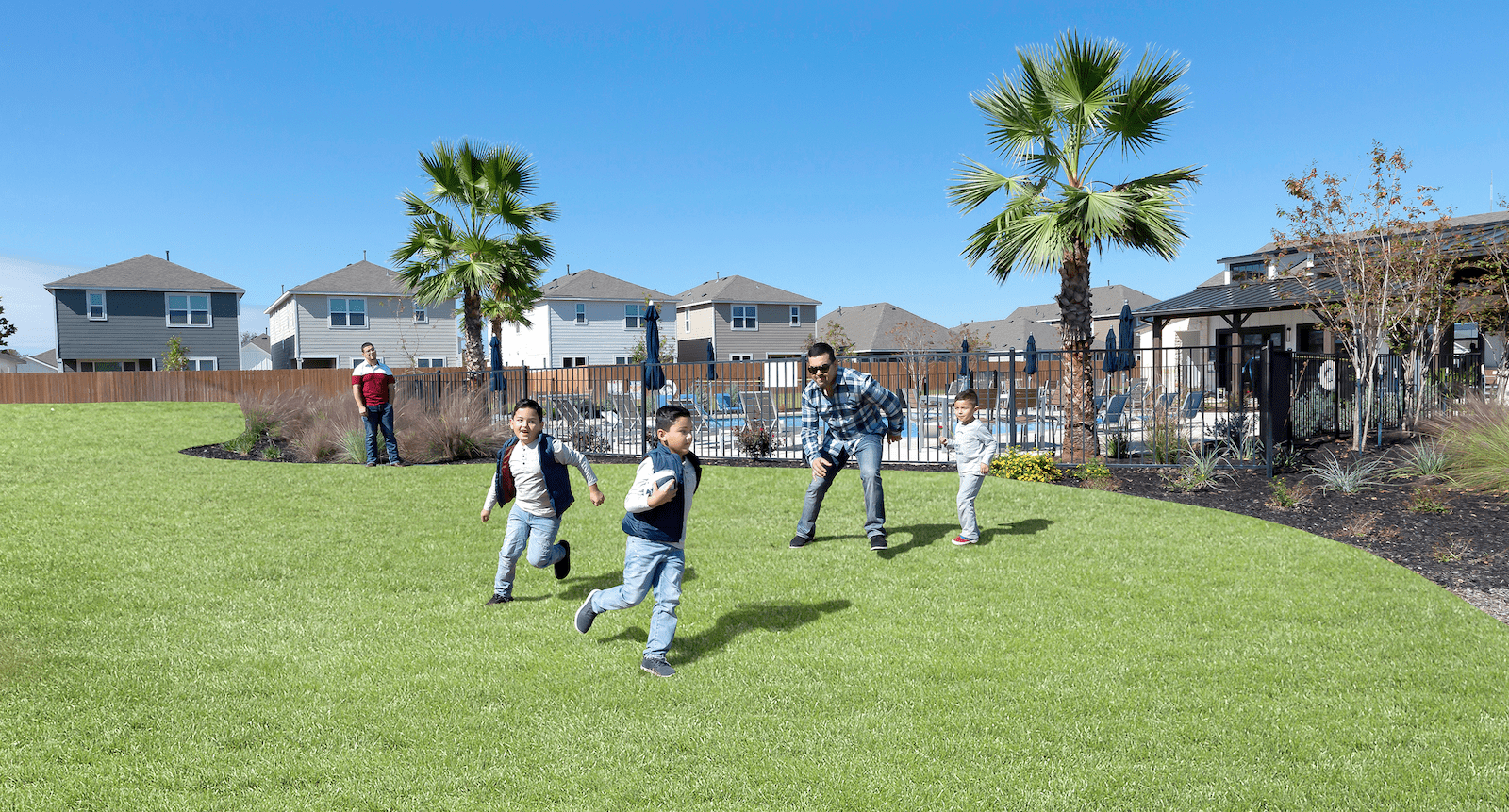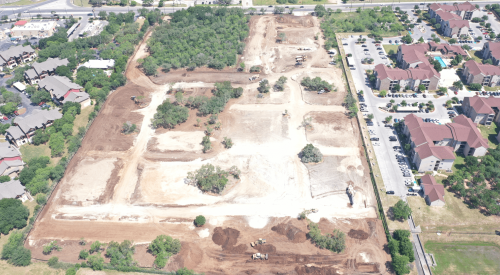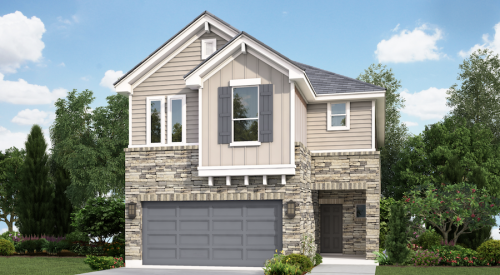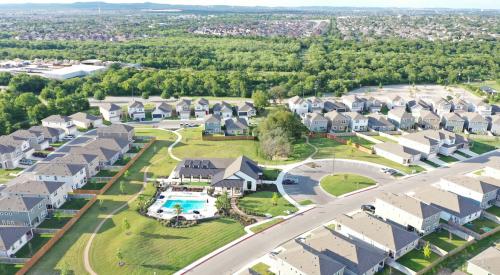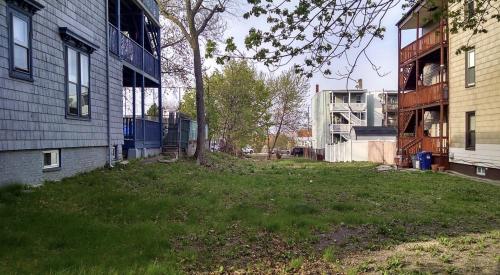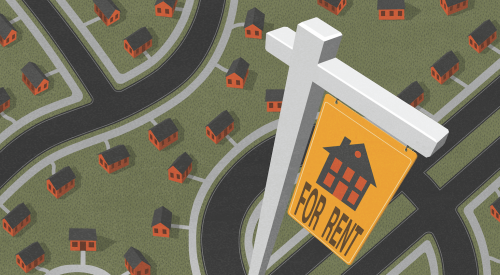In recent years, the single-family rental (SFR) sector has become one of real estate’s hottest. Barely formulated just over a decade ago, the asset class now counts some of the nation’s largest home builders, along with aggregators, private equity funds, and true built-for-rent developer operators as major participants.
Despite some concerns about the quality of the communities being delivered by some of those players—especially those in the game for a fast return on investment—SFRs are soaring in popularity among renters. In fact, current demand drivers point to the long-term attractiveness of SFRs among renters across multiple demographic groups.
RELATED
- Built to Rent Is Booming, But Operational Challenges Loom for This Housing Sector
- Design Ideas for Single-Family Built-to-Rent Homes
- The Synergy of Industrialized Construction and Built-for-Rent Housing
Challenges to Homeownership Are Growing
The for-sale home marketplace hits the news daily, with regular reports of skyrocketing prices, bidding wars, and supply issues. First-time homebuyers are struggling to get their foot in the door. Once a cornerstone of the American dream, homeownership has become out-of-reach for countless Americans across the country.
While builders struggle with rising land and construction costs, the financial feasibility of delivering new supply in the starter-home category has become a legitimate challenge to profitability, compounding the issue.
The lack of new-home production, as well as the shortage of existing housing supply in good locations, combined with pent-up demand, has led to a massive run-up in home prices across the country, even in markets experiencing downward pressure on population.
Rentals: Essential Alternative to the For-Sale Housing Sector’s Shortages
The unrelenting dynamics in the for-sale sector are today forcing a record number of would-be buyers to become renters. Yet, despite the solid performance of multifamily production since the 2007–2009 financial crisis and through the pandemic, numerous locations across the U.S. still lack quality rental options.
With much of the renter demand today coming from those who desire the lifestyle, privacy, and space of a single-family home, demand for alternatives to the traditional apartment is surging. In fact, demand for SFRs has been mounting for years, climbing alongside the peak performance of apartments over the past decade.
With a growing desire among Americans for more spacious and flexible rental options, it’s natural that demand for single-family rentals has expanded even further in the last two-plus years. SFRs that are enviably amenitized contiguous communities in prime locations with on-site maintenance are experiencing the highest interest among renters today.
RELATED
Pandemic Effects on Single-Family Rental Locations
There is another pandemic-related phenomenon, which specifically affects the location of new for-sale and SFR communities.
A confluence of factors over the past two years, including lockdowns, physical distancing measures, and remote working and learning, has led to the mega-movement of populations out of high-priced urban cores into suburban markets—what the popular media called “suburban shift.” Two prime examples are the mass movement of people out of California and into numerous Texas markets, as well as the exodus of Manhattanites from New York City to various Florida markets. Many of those migrating are looking to plant themselves within single-family rental communities.
Supporting evidence for the mass moves to Texas and Florida comes from moving and storage rental company U-Haul, which ranked the states No. 1 and No. 2, respectively, for population growth during 2021, accounting for 60% of the growth across the top 25 growth cities last year.
In fact, 10 markets within Florida and five within Texas are in the top 25 of U-Haul’s 2021 top 50 growth markets, where growth is calculated by the net gain of one-way U-Haul trucks entering a city or market versus leaving that same city or market in a calendar year. U-Haul notes the mass migration to southern states continues to be magnified by the lingering pandemic.
Is Single-Family Rental Demand Here to Stay?
Some may argue that the Coronavirus-related desire for the bigger space and outdoor amenities that SFRs afford could be just that and nothing more.
Yet, what’s probably more likely is that, even when we make it through the hardest part of the pandemic and the world begins to normalize, it’s probable the experience will have an impact lasting for many years, or even decades, to come.
Whether wary of the virus or not, many home shoppers will likely now work remotely and will be less likely to forgo a private outdoor space and their own garage. They will have experienced the single-family “lock-and-go” lifestyle and will be willing to pay a bit more for it.
Dynamics in for-sale housing are unlikely to change dramatically amidst ongoing, systemic issues, such as labor costs and supply chain issues. While upward trending interest rates could lead to a slight cooling effect, new supply will remain challenged and homeownership will be unattainable for a significant slice of the population. Single-family rental communities in suburban markets will continue to be one of the only means for consumers to afford and achieve the lifestyle they seek.
